|
|
| |

Alfama is one of Portugal’s oldest districts.
Here the Arabic influence and the fishing past of Lisbon are still present. Alfama’s narrow alleys and small squares invite you to explore its hidden corners, unique fish smells, the sounds of Fado, and fresh laundry hanging out of the windows – all of these create a friendly local community of people.
There is no specific path of way to follow to discover and appreciate this area, just follow your steps, maybe finding yourself twice or 3 times in the same palce, maybe ending in the same square but from another alley.
Built in 1681, Santa Engracia Church is the National Pantheon, where the elevator inside whisks visitors to the top of the dome to enjoy a sweeping 360-degree panorama of the city below.
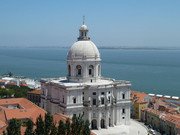 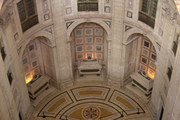 
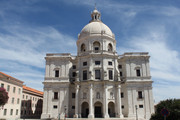 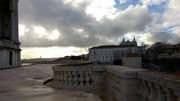 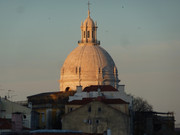
The Fado Museum opened in 1998 and has incorporated items belonging to hundreds of people related to this wonderful and charming cultural tradition of fado music. The Fado Museum is a living testimony of passion and dedication that never stops, and has helped musicians, instrument manufacturers and researchers gain the exceptional esteem which the practice of fado enjoys today.

It is not easy to spot this building, the Foundation Jose Saramago or Casa dos Bicos.
This unusual building with more than thousand spikes was inspired by the Venice palace. It was built in 1523 and features Manueline-style windows. . There is also an archaeological excavation on the ground floor, which presents items that date back to the Roman period and some unique pieces such as parts of Lisbon’s medieval wall.
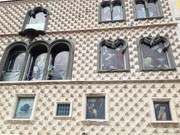 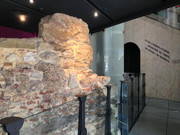
The Monastery of São Vicente de Fora (St. Vincent Outside the Walls) is one of the most important historical buildings in the city of Lisbon. It was founded by the first Portuguese king, in the 12th century. oday it is still possible to see the original cistern, as well as the cloisters, decorated with tiles from the 18th century, being of special interest the collection that depicts the fables of LaFontaine.
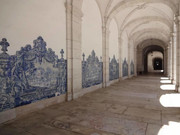   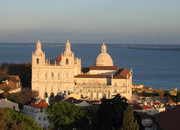
If you are lucky enough to be there in the right days of the week, you can find the Lisbon's Flea Market, or fiera de ladra, literally translates as the ‘thieves fair’.
A market of this type is thought to have been in place in Lisbon since the 12th Century and the name Feira da Ladra was first mentioned in the 17th Century.Today, the traders here are perfectly legal, many of them gypsies showing their wares in the Campo de Santa Clara street,
 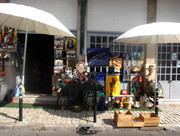 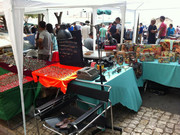
The remodelled Miradouro da Senhora do Monte received its name because of the ancient chapel of Nossa Senhora do Monte, founded in 1147, hiding beside the viewpoint. This little viewing platform is one of the best venues for breathtaking panoramic views of Lisbon, and is the highest point in Alfama. Miradouro da Senhora do Monte boasts having a full angle of the city view, as well as overlooking the Sao Jorge Castle and districts such as Chiado and Baixa.
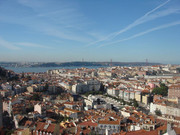 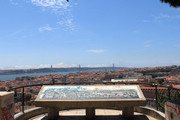 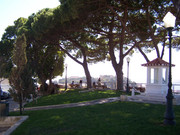
Erected in the 12th century, Se Cathedral, also known as the Lisbon Cathedral, is the oldest church in Lisbon. It features details of the Romanesque and Gothic architecture styles, which make it look more like a wonderful castle. Despite being called Lisbon Cathedral, it cannot rival the Jeronimos Monastery in the beautiful art of its carving and exterior decoration, however it is an important Roman Catholic church for locals. At the back of the entrance is located the 14th-century cloisters, with Roman and Moorish findings from archaeological excavations. Upstairs you can find a treasury with a collection of precious stones and gems.
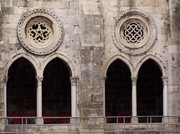 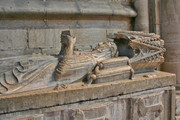 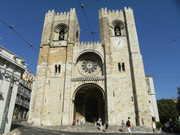
 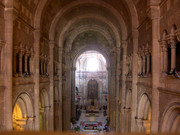 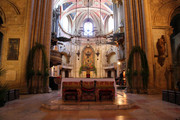
Belem is the delightful district to the west of central Lisbon, and is the setting for many of the capital’s most iconic and important tourist attractions.
Belém has been long associated with seafaring and the early Portuguese explorers, and many of the historic monuments found in the district either commemorate this glorious past, or were funded by the vast wealth that flowed into Portugal from the colonies.
The Padrão dos Descobrimentos (the Discoveries Monument) is one of the most iconic monuments of Lisbon, and was constructed to promote national self-confidence, whilst honouring the great Portuguese explorers. From afar the monument harks from the harsh Soviet Socialist Realism style of architecture, but up close there is incredible lifelike detail to give each of the characters their own distinct personality.
On the western side of the monument are the depictions of the explorers, while on the eastern side are the key financiers, with both sides supporting the statue of Infante D. Henrique, the primary instigator of Portugal’s 15th century Golden Age of Discovery.
   
  
The delightful Torre de Belem once stood in the centre of the Tejo Estuary, to guarded the city from sea bound attack, and today the little fort has become the emblem of Lisbon. For such a trivial defensive fortification, the Torre de Belem was constructed with elaborate craftsmanship and is adorned with beautiful carved stonework.
The fort was once in the centre of the Tejo but since its construction the flow of water has altered and is now positioned on the edge of the banks of the estuary.
It is very beautiful, but there is a long queue to get inside, and once inside you are forced to walk forward all the time and have chance to enjoy the place  . .
  
 
The Jeronimos Monastery rapresents Portugal's power and wealth during the Age of Discovery.
It was built to commemorate Vasco Da Gama's voyage and to give thanks to the Virgin Mary for its success.
The monastery was populated by monks of the Order of Saint Jerome (Hieronymites), whose spiritual job was to give guidance to sailors and pray for the king's soul. It is one of the great triumphs of European Gothic (UNESCO has classified it a World Heritage monument), with much of the design characterized by elaborate sculptural details and maritime motifs. This style of architecture became known as Manueline, a style of art that served to glorify the great discoveries of the age.
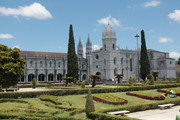   
The cloisters are magnificent, each column differently carved with coils of rope, sea monsters, coral, and other sea motifs evocative of that time of world exploration at sea. Here is also the entrance to the former refectory that has beautiful reticulated vaulting and tile decoration on the walls depicting the Biblical story of Joseph.
    
  
The Church is breathtakingly beautiful with is vast high arched ceiling held up by octagonal pillars. A spider’s web of carving weaves across the vaulted ceiling. The pillars themselves are intricately carved with a variety of motifs. Even through the hum of tourist whispers and footfall, a hush of peace hangs in the air. Light streams through the stained glass windows.
    
Within the Church there is the grave of Vasco da Gama
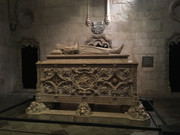 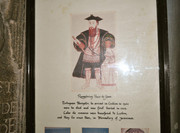
If you don't know what to eat, but you'd like to have a lot of choices in yuor hanhs, Time Market food all is a good choice.
The place is simple, nothing sofisticated, with shared tables. The selection of food is huge, however, finding a sit can be challenging.
   
Cabo da Roca is an important coordinate for those sailing along the coast, as it is the most westerly point of mainland Europe.
Around 150 metres above the sea, here you can have a panoramic view over the Serra de Sintra and the coast, which makes it worth the visit.
  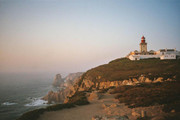
  
May '17
|
|